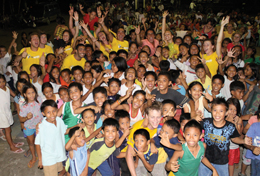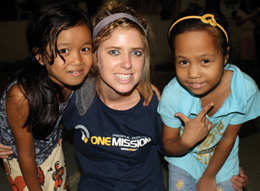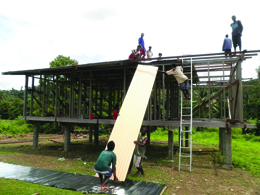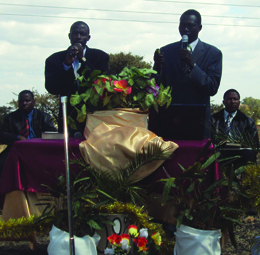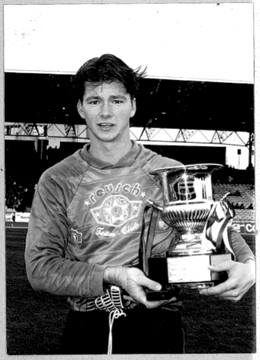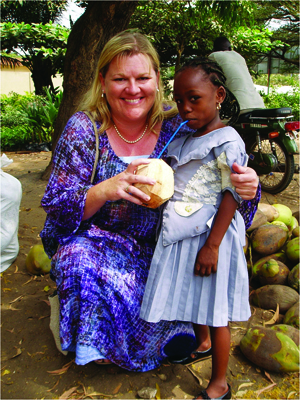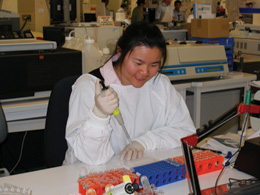Ken Thomson
Dr Ken Thomson graduated from Avondale in 1954, taught physics for many years at Avondale and at Pacific Union College, California, and is now retired in Cooranbong.
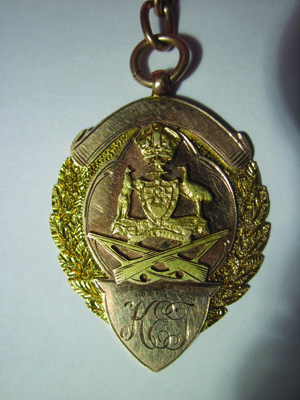
Medal presented to the author’s father, K E Thomson, on his return from the war. Photo credit: Ken Thomson
At least seven sons of Cooranbong families served with the armed forces in the First World War. The local population was proud of them, presenting them with medals honouring their commitment when they left
for the war in 1915 and after their return in 1919.(1) Fortunately they did return, though some bore scars.
Not so fortunate was Henry (Harry) Stout, who to my knowledge was the only former Avondale student killed in action at Gallipoli. Stout, who came from Victoria, was at Avondale during 1906-1908, 1910 and 1911. He studied a variety of literary and practical units at Avondale, but did not graduate. As with most students of that era, he earned his living and fees doing local manual labour. An extract from the 1907 diary of Chris Thomson (a fellow student improving his own block of land) gives an insight:
12 Apr 1907: Worked on logs for Rouse with Alf and Neil also Harry Stout. We drew them from the swamp in Davises below my land. It was quite interesting and lively. Old Bob was stuck in the mud. Howard’s acre was ploughed today by Harry. I am to have my land ploughed soon. I got a gate post out of the work С which was gratis. (p.25)
17 Apr 1907: Harry did not plough all day, it was too rough with stumps. I worked on them this afternoon. (p.26)
30 Apr 1907: H. Stout did some ploughing on my land today. (p.29)
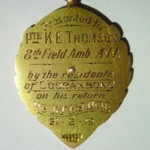
Harry also displayed ability in writing, as shown by a poem of his published with other student contributions in a special Avondale issue of the Australasian Record, 15 May 1911. The first and last stanzas of the poem are reproduced below.
Derelict
Adrift on ocean’s trackless waste,
The plaything of its waves,
Tossed in their grasp to reeling heights
Or prostrate in their caves;
Sport of the winds that howling sweep
Through crippled spar and sail,
There floats a hulk – a battered hulk,
Abandoned to the gale.
. . . .
On life’s broad sea how many wrecks
Go drifting, drifting past,
That yesterday had hope-filled sails
And courage on the mast!
Now with torn sheets, with pennon gone,
Nor rising to the wave,
On aimless course they lurch along,
Their destiny a grave.
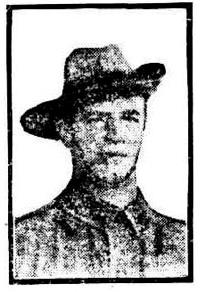
Lance-Corporal H. Stout (2)
Harry Stout was born in 1886, son of William Henry and Margaret (Williamson) Stout, immigrants from England. The family had lived at Goldsborough, Victoria, in the goldfields between Bendigo and St Arnaud. By the time Harry enlisted for the war both his parents had died, and he gave the name of his uncle as next-of-kin: John Williamson of Richmond, Victoria. After leaving Avondale Harry lived in South Australia for two years, enlisting for the war at Morphettville in September 1914, aged 28.
Stout was evidently a man of strong principle. A biographical article in the Adelaide Advertiser (23 September 1915, p.8) stated that at the time of his enlistment he was secretary and organiser of the South Australian branch of the Australian Freedom League Р an organisation agitating for the repeal of compulsory conscription to the armed forces, which it saw as a threat to civil rights and religious liberties. The League was not, however, opposed to a defence force enrolled on a voluntary basis. This was also Stout’s view.
The Adelaide Advertiser article continued: ‘While opposed to the compulsory clauses of the Defence Act, he [Stout] always recognised the need of a system of defence, and advocated the voluntary method, and, like a number of fellow members of the league, offered his services to the army when the occasion called for them.’ The article also noted that ‘Mr Stout was an effective platform speaker and a writer of considerable ability. Many mourn the loss of this good friend and genial companion.’
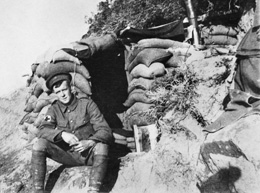
Gallipoli 1915. A stretcher bearer of the 4th Australian field ambulance sitting in front of a dugout reinforced with sandbags. (3)
While Stout opposed conscription, he also saw the need to serve his country, and did not hesitate to voluntarily join the Medical Corps. He was assigned to the 4th Field Ambulance Unit, which landed with the 4th Brigade of the New Zealand and Australian Division at Gallipoli on 28 April 1915.
Harry had plenty of work as a stretcher bearer in B section, 4th Field Ambulance, immediately after landing. The casualties on the three previous days had been heavy, and continued unabated until the evacuation in December 1915.
However, Harry did not see the end of 1915, losing his life on 21 August. A letter written by Lance-Corporal Dowling describes how Lance-Corporal Stout died.
Before you receive this note you will have read of the death of your friend Harry Stout. We being the best of chums, I thought I would write to his friends and tell them about his death. On August 21 we received orders to go to the firing line to look after the wounded. We had just finished a first aid station when the shrapnel began to fall, and Harry just moved as one broke close to us. One of the bullets entered his head and lodged just above the eye. He never spoke, and only lived for about ten minutes. He was promoted to the rank of lance-corporal a few days before his death. We buried him next morning in a pretty little spot on the edge of a corn field. One of my friends is going to take a photograph of the grave, and I will send one to you. The following was written on the cross: ‘In memory of 1092 Lance-Corporal H. Stout, B Section, 4th Field Ambulance. Killed in action, August 21, 1915.’ (4)
Here, probably, is the photo Dowling refers to:
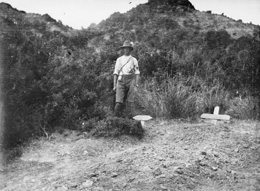
Alfred Dowling at the grave of Henry Stout, 4th Field Ambulance, killed in action, 21 August 1915. (5)
The action in which Harry Stout was killed was the assault on Hill 60, north of Anzac Cove.
On 21 August, for the Australians of the 4th BrigadeРmen of the 13th and 14th BattalionsРthe initial assault on Hill 60 was a costly failure. They attacked across a shallow valley where dozens of them were hit by Turkish machine guns. Those who reached the comparative safety of the slope on the far side looked back to see their wounded comrades and soldiers of the Hampshire Regiment caught in a bushfire started by Turkish shells. As uniforms caught fire, grenades and ammunition carried by individual soldiers exploded. However, the smoke allowed Captain H G Loughran, the Regimental Medical Officer of the 14th Battalion, assisted by his stretcher-bearers, and Battalion Chaplain Andrew Gillison, a Presbyterian minister from East St Kilda, Melbourne, to drag away some of the wounded. (6)
In October 1916 Lance Corporal Francis Catchlove, 4th Field Ambulance, recuperating in England, gave an account of Stout’s death to the Australian Red Cross Wounded and Missing Enquiry Bureau:
I knew him well. He was buried at Australia Valley, Gallipoli, the next day. The Chaplain was from our 4th Brigade but I do not remember his name. . . . I have seen Stout’s grave. There was a small wooden cross erected with his name and number. His relatives have been told. One of the chaps who had been wounded and was over in England went to the Isle of Man to see them. (7)
Stout’s remains were later transferred to the ‘Norfolk’ cemetery, and finally to the 7th Field Ambulance Cemetery established by the Commonwealth War Graves Commission after the war.
Harry’s death was marked by his Avondale friends. A fellow student, Alice Higgins, who attended Avondale for several years while Harry was also there, requested information about his death from the War Department, and received a letter in response. (8) A year after his death, the following obituary notice appeared in the Australasian Record (11 September 1916):
STOUT. On August 21, 1915, Brother H. Stout, of Gippsland, Victoria, passed to his rest. Many Australian soldiers, in writing of the evacuation of Gallipoli, mentioned with what deep sorrow they deserted the graves of their brave, sleeping comrades. Among the rest, picturesquely situated on the edge of a field of corn, and marked by a white cross, is the last resting place of Lance-Corporal H. Stout, of the South Australian Field Ambulance. Exactly a week before his death Brother Stout wrote to a friend, expressing implicit confidence in all the fundamental principles of the truth, referring especially to some points that had previously troubled him. He spoke of having spent much time in carefully reviewing the prophecies of Daniel. Early in the morning of August 21, while engaged in his work for the wounded, he was struck in the forehead by shrapnel, and lived only about ten minutes. A large circle of friends mourn their loss, but look forward with confidence to the time when they shall meet him on the other side of sorrow. СA FRIEND.
There is an oral tradition that the two large Bunya pines that once stood in front of Preston Hall were planted as memorials to Harry and to a second former Avondale student, Frank Richard Dawkins, who survived the Gallipoli fighting, but was killed at Poziers on the Western Front. I have been unsuccessful in locating any written reference to the memorial significance of the Bunyas, but it fits the apparent age of these trees. (9)
Another memorial to the two former students, in the form of a commemorative brass tablet, was approved for a suitable position in the College Chapel. It was donated in 1920 by Mr Peet, a Cooranbong resident who had two sons attending College. (10)
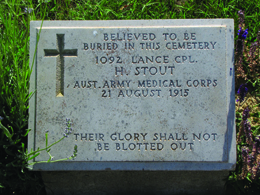
Memorial plaque in the 7th Field Ambulance Cemetery, Gallipoli. Photo credit: Ken Thomson
Unfortunately, the years have now obliterated these memorials, and all we have are second-hand memories. As with many who fell in the fog of war, even the exact location of Harry Stout’s remains is uncertain. Wherever his final resting place may be, his sacrifice is referenced by a memorial plaque in the Commonwealth War Graves Commission’s 7th Field Ambulance Cemetery at Gallipoli.
(1) Gosford Times, 26 Jun 1919.
(2) Picture, Adelaide Advertiser, 23 September 1915, p.8.
(3) Australian War Memorial, Canberra. A.D. Hood Collection, Donor J. Borstel. Used with permission.http://cas.awm.gov.au/item/P01116.001
(4) Adelaide Advertiser, 14 October 1915, p.10.
(5) Australian War Memorial, Canberra. Image C00662. Used with permission. http://www.anzacsite.gov.au/2visiting/graves/images_graves/7th09.jpg
(6) Richard Reid (2000), A ‘duty clear before us’. Commonwealth Department of Veterans Affairs, Canberra, p.46.
(7) Australian Red Cross Wounded and Missing Enquiry Bureau File 2650106, Australian War Memorial, Canberra.
(8) H. Stout, No.1092, NAA Digital record, pp. 26, 27.
(9) A rough count of the tree rings yields ~90 years of life ending in 2008.
(10) Australasian Missionary College Board Minutes, 23 June 1920.
Acknowledgements
The following have been helpful in finding material for this article:
C.H. Schowe, ‘Development and Growth of Australasian Missionary College’ (unpublished manuscript).
Milton Hook (1998), Avondale: Experiment on the Dora. Avondale Academic Press.
Michael Chamberlain (1997), Cooranbong, first town in Lake Macquarie.
Kim Phillips, editor, ‘Spirits of Gallipoli’ Project (www.spirits-of-gallipoli.com)
Rose-lee Power, Curator, Adventist Heritage Centre, Cooranbong.
